#xavier corberó
Text






House of the artist Xavier Corberó in Esplugues de Llobregat (Barcelona Metropolitan Ambit, Catalonia).
Corberó (1935-2017) was a renowned sculptor and painter of abstract art. In 1968, he bought this piece of land in the outskirts of Esplugues. His intention for this plot was the same one that he answered in all interviews about all his works: "to make poetry". He designed his own house to be a labyrinthic work of architectural poetry. He kept expanding for over 40 years, until his death.
This complex consists of 6,000 m2 with 9 buildings, 25 rooms, a hexagonal interior courtyard, 10 patios, more than 400 works of art, a Rolls-Royce (luxury car) used only as decoration, an underground auditorium with a capacity for about 250 people, and a garden with many totem-like sculptures made by Corberó.
In 2022, it was bought by the Esplugues de Llobregat city council. Nowadays, it's being prepared to open as a public cultural space.
Photos: Alberto del Castillo, sivard_official, CC Magazine, Manolo Garcia/Ara.
#arquitectura#xavier corberó#arts#esplugues de llobregat#catalunya#architecture#buildings#interiors#exteriors#modern architecture#cityscape#concrete#catalonia#europe#landscaping#luxury home#luxury#design
71 notes
·
View notes
Text




Espai Corberó / Xavier Corberó and Emilio Bofill / 1967 / Barcelona, Catalonia, Spain
Espai Corberó is a labyrinthine complex consisting of nine interconnected buildings and twelve courtyards. While Xavier Corberó, a sculptor, was alive, it served as his workshop and residence. Since his death in 2017, it is being converted into a cultural site.
Photo sources and additional project information: 1, 2
#architecture#modern architecture#concrete architecture#Xavier Corberó#surreal architecture#rowan's architecture corner
5 notes
·
View notes
Text
Disco Club 'Panell'
La casa de Xavier Corberó en Barcelona y sus paredes escultóricas me inspiraron para realizar este club nocturno y gracias al pack de Felixandre 'Grove' ¡ha sido posible!
Una discoteca con todo lo necesario y con el plus de un jardín secreto
Lot: The Narwhal Arms
Lot type: Night club
Lot size: 30×20
Value:
CC sets ~ Felixandre: Grove, Berlin, Shop The Look's S1, Florence | Harrie: Spoons, Octave, Brutalist | Tudtuds: Mirr Kitchen | House of Harlix: Harluxe, Livin' Rum, Bafroom, Kichen | (Max 20): plantas


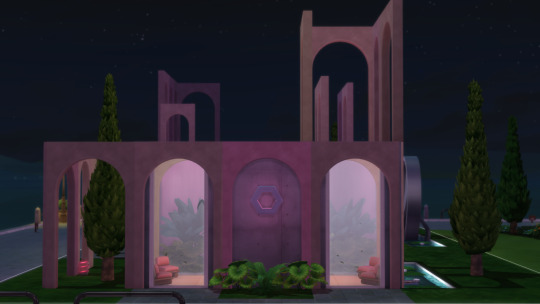


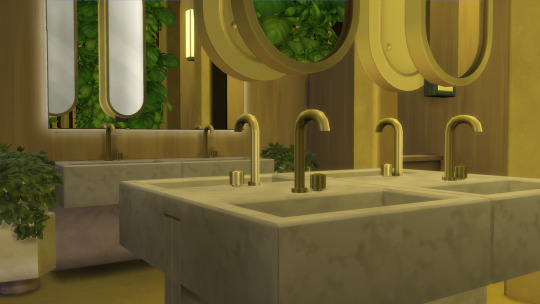
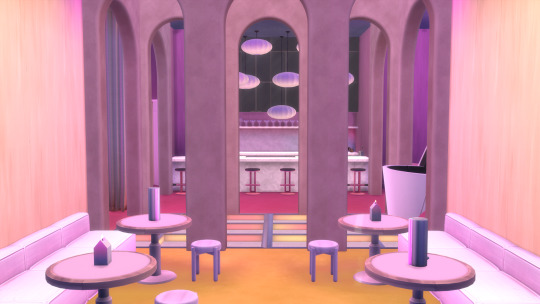
#felixandresims#heyharrie#tudtuds#houseofharlix#get together#the sims 4#community lot#nightclub#windenburg#(max20)
10 notes
·
View notes
Text




Xavier Corberó’s Catalan “Labyrinth” estate
4 notes
·
View notes
Text



Trees & arches at Xavier Corberó home outside Barcelona
5 notes
·
View notes
Text

Xavier Corberó’s Labyrinth Home, Barcelona (1968). > Photo: Salva López
1 note
·
View note
Text
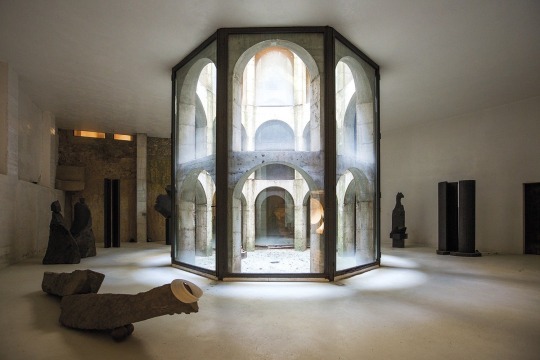



xavier corberó’s espai corberó (1935) in barcelona, spain
“more than a house, it is a place, a place, that has arisen from a total need: spiritual, emotional, physical… which, ultimately, serves to cover the ugly…”
0 notes
Text
The House of Xavier Corberó, Corberó (On process) Interview by Alberto Moya
Moya: What was going through your mind when you started building the house?
Corberó: Perhaps the primal reason that moved me to start building was that I found the last fine spot on a street in Esplugues, a municipality of the Barcelona metropolitan area. I thought that it could conceal the ugly bit, it could end up looking pretty nice. And that's how I have spent the last 50 years of my life.
It all began in 1960 and we have been building and building and building ever since. Everything that I have ever done can be found here. This house grew on me. I've kept on creating while getting older. This space is around 5,000m. I began living on the other side of the street. Later, I moved across the way. So I have been moving around during construction. When I first arrived, the space was a potato field. Works began in 1968-69 and we are still working on it. I had a plan and drew almost everything. It’s now beginning to be like what I had hoped-although I never really expected to see it take shape, because I didn't have a penny. Yet we have found ways to pay for most of it. I am now trying to see it I can pay for what's left. The new area I'm working on at the moment is rather big, with many windows. It's quite expensive.
Moya: What did you have in mind when designing this house? Was there any specific place, any point of reference? New York, maybe? Anything you wanted to bring from elsewhere?
Corberó: No. this was what I had always wanted to do, and that is how drew it.
Moya: What exactly did you want to do?
Corberó: I wanted there to be a spot from which almost everything else could be seen. To create, to the extent feasible, a continuum: a place in which the mental space-not the real one-is what matters. I also wanted it to be similar to when you listen to a piece of music by Bach; if you stop and start again, it doesn't matter that much, nothing really happens, because it's a series of things that are happening at once, but a series of things that become one same thing. That's to say, the poem is one, but the words that compose it are several. I also wanted to play with the lighting; I had this idea of having a circular patio, but then I realized that these octagonal windows could form a kind of kaleidoscope, creating these unexpected and beautiful reflections. With this I created some sculptures, too.
Ultimately, I make sculptures, and the houses just happen to come from these sculptures, which you could say come from the beast itself. You never really know why they come out as they do. My aspiration is to create poetry with anything I put my hands on, be it sculpture, architecture, or space. What interests me is that the final result can become a poem, which for me is the mother of everything. Poetry should be simple: a poem is literature that didn't reach the age of a page.
In other words, with just one page you can say a lot, and that's largely how I see my work.
Moya: Do you think music is necessary to understanding this house? Is this something you try to incorporate when someone is visiting the space?
Corberó: Yes, I do. I really like music. I have always thought that when a space has the right scale, music will always sound beautiful. Just like when an exterior has the right scale, trees grow; there is no need to plant them. Here, there is a fig tree right in the middle, and there is another patio upstairs with another fig tree right in the middle. And I bought neither of them, nor a single palm tree of the many I own. They grow because they are happy here! So with music it's the same; it sounds right when the space's scale is right. I wasn't aware of that before, but now l know. Music will always go well with the space; it contributes to the poem.
Moya: When you were designing the house, were you thinking about your own needs and seeing yourself alone in the space, or were you thinking more about your family? Or was it both at once?
Corberó: I most definitely wasn't thinking of the family, but nor was I thinking of myself. I try to step aside from everything when working to stay very neutral. My priority is that which I'm making. When engaged in that project, there is definitely one way to make it more perfectly than other ways, and there's also a way that is the most perfect of all. The idea is to get as close as possible to the most perfect way. More than thinking, you have to constantly doubt that you're already doing your best. You have to observe, look at it over and over again, and, where necessary, make more mockups to see if the scale and the different components are right. We can never keep track of every detail. And, of course, this is more than a matter of thinking-it's a matter of looking and seeing. Nowadays it's not so common to look. We all go to school, we are all handed the diploma, everybody thinks, but no one looks. I often think of the sushi cooks who spend eight years just looking, and by the end of it they know how to cut the fish. Of course you could also explain how to cut the fish, but it's useless. You have to observe how the fish is cut. People think it's enough just to think. But the most essential action is to look. Going to school is important up to a point—no one teaches you how to kiss at school. So I wouldn't say there was a specific feeling, emotion, or need that drove me when designing the house. I did it in the same way I do sculptures: I don't think too much. I only think afterwards, when I see it. I prepare drawings, then I do mockups, and then I do dummies because I don't trust myself.
Moya: Would you say there are any aesthetic trends that predominate here?
Corberó: No. For me, a house is like a diary. And, here, every object has its own personal story. These two pomegranates, that teapot over there— and what about the dialogue between the different materials and the whole house? I guess these are ruled by life, different moments and experiences one has had.
Moya: When you were designing the house, how did you see the connection between beauty and necessity? Was one of them more relevant to you?
Corberó: The idea of necessity was the same one that leads me to make sculptures, something that can become pretty mysterious at times. When creating a piece, you think it must turn out as you imagined it. This makes you sharpen your wit so the piece is the closest it could be to the mental image.
But you're surprised because you have only anticipated one percent of what actually happens, just like what happens with filmmaking or anything else. A written piece is not the same as a film on screen. Now there is a tendency to think that all this can be solved with all the virtual resources we have today. Today, most architects work digitally, so between virtual reality and theory we are forced to sit on chairs where we can't even sit. Or we find ourselves in spaces where it's impossible to relax because if's awkward-such as in a hotel where you would think you'd feel comfortable, but it feels more like the waiting room of a gloomy airport. What I try to do does not stem from reason. Ot course l use reason to construct and to make sure the building stands on its own, but the rest is all due to a variety of reasons. Reasons that have an ethical and/or an aesthetic dimension—two terms that work together-as well as divine. The spirituality of the whole thing is indefinable. If it were definable it would no longer be spiritual. It would be rational, I guess. And that is the problem with very rationalist architecture: it's by no means wrong, it's perfectly fine, but you don't feel all right in it. If I dedicated myself to building houses for lords and masters, guess I'd think more carefully about how they are going to be used. But I would rather take the thought as such, for its own sake. This sitting room is not meant to have big important meetings, it's meant to be as it is, a space where I can place a sculpture, a piece of furniture, all contributing to make it look more beautiful. The thought relates to what it is in itself, not its purpose. Otherwise I'd do it differently.
Moya: Tell us about the floor plan of the house, its structure, its relation with the space.
Corberó: I was mostly interested in the mental space. My intention was to make it possible to see most of the space at once. It's not like I consider it that much. I draw and then make; that's it. I guess the key is that I'm always looking, over and over. I don't believe very much in inspiration; I believe much more in perspiration. Work is what is most inspiring. The more you work the more inspired you are. And if you wait for inspiration to work, you never start. So it's true that this is my main working tool, and that I work a lot here, thinking about work. You could call that inspiration. I just don't know.
Moya: Talk me through the aesthetic and ethical dimensions of the house.
Corberó: In the end, aesthetics is the power to convince whoever is coming next that what you did was beautiful. However, whether or not something is beautiful is difficult to define. Hardly anything about all this can be defined, and that is why it's so difficult to learn anything in a place where people say they teach. It makes more sense to learn by being an apprentice: a place where there is no teacher, just someone who is learning. He carefully observes and pays attention, and that is how he learns. I think we are now going back to those days. Anyone who's making anything good out there today does not come from a university but from an apprenticeship.
Moya: What is it that you most enjoy doing when you find yourself at home?
Corberó: What I most enjoy is doing those things I have imagined in my head but that I have never found the time to do. Things I would love to see come true someday. The difficult bit is finding the time to do all those things. Most days, by the time I get home I am so exhausted I just go straight to sleep, and I must say I have a wonderful sleep. And when I wake up in the morning, I always find something that surprises me; things I didn't think were there but are. And these things take you to other things, as happens with sculpture. A sculpture takes you to another sculpture, and all together it's hard to explain, but to me that's how all things work. I never feel lonely if I find myself alone at home. I like being alone; in fact, it's when I'm at my best. To be able to think or make anything, it's always better when you're alone.
Moya: Any visits from people you admire?
Corberó: Yes, many! My two greatest masters were Salvador Dalí and Russell Page, a landscape architect disciple of Jean-Claude Nicolas Forestier, who to me was the greatest ever.
Moya: Did you collaborate at all with Dalí?
Corberó: Yes, I made the eggs for Dali. All the eggs. The ones adorning the top of the Dalí Theatre-Museum, as well as the ones in Cadaqués. It all comes from those days in which we would see each other and he would ask, 'What are you up to?' and I would answer, I'm learning to lay eggs, because I thought that was the best business of all-laying eggs. And also because I consider making artworks to be a bit like laying eggs. It's something that comes out naturally and you just keep on going, you keep on laying. We were very good friends with Dalí. He was my first client. He bought everything I had in an exhibition at the Hispano-American Biennial in Barcelona in 1955. Later, he called and said, 'Allo, allo, it is Dali'. I thought it was someone pulling my leg, because I was only 19, so I said, And I am the bishop of Barcelona', and hung up. Then he called back and spoke to my father, but my father never told me. I didn't hear from him again until five years later, at my first one-month show in New York, where Dalí came in every day. I asked him why he came every day. And he said, 'Well, because I'm interested in your work; it's a pity you are so rude. I asked what I had done. He responded, 'No, it's what you didn't do!' I didn't understand what he meant. Finally, he explained. He said that it was a pity because someone had told him that I liked Zippos, the lighters used by the military, so he'd asked Cartier to make one for me. But as didn't appear he gave it to Baron de Redé. Anyway, what is rather strange is that some 25 years later, I had an operation in Dallas, for lung cancer. I was in an elevator in New York and this very beautiful lady recognized me. She was French, and we became good friends. On the day of my birthday she said, 'Sorry, I didn't remember to buy you anything, but I'm going to give you something you might like, which was given to me by a friend I looked after in hospital. And she gave me the lighter, because the friend was Baron de Redé. So I went to see Dalí and told him, 'Look, I have it'. And instead of saying, 'Oh, that's funny!' he said, 'Of course'. As if it were the most natural thing in the world that 25 years later, I would receive the lighter via such a strange set-up.
0 notes
Text

Casa Xavier Corberó
1 note
·
View note
Photo

Barcelona, Xavier Corberó
370 notes
·
View notes
Text










Casa Sublim
Xavier Corberó, by Salva Lopez
35 notes
·
View notes
Photo
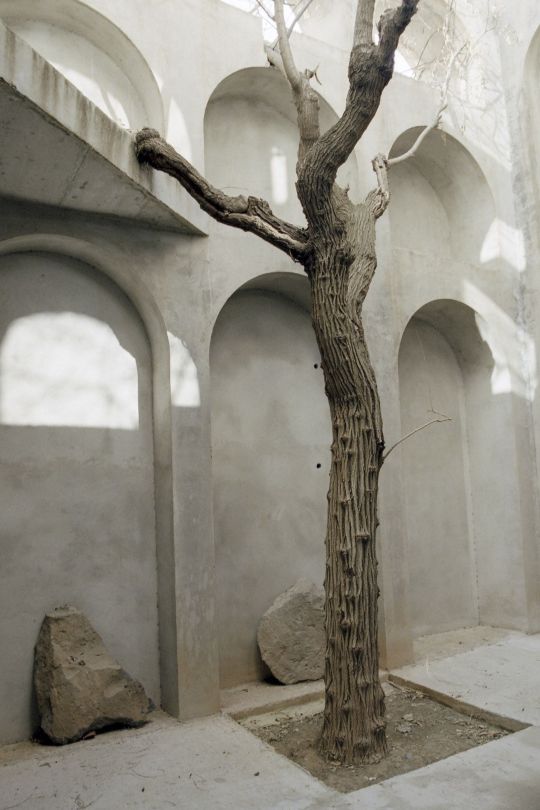
| Xavier Corberó's House captured by @silvia_conde for @honnethebrand SS18 Campaign |
#xavier corberó#silvia conde#honne the brand#querida si#photography#modern architecture#contemporary architecture#minimal aesthetic
5 notes
·
View notes









